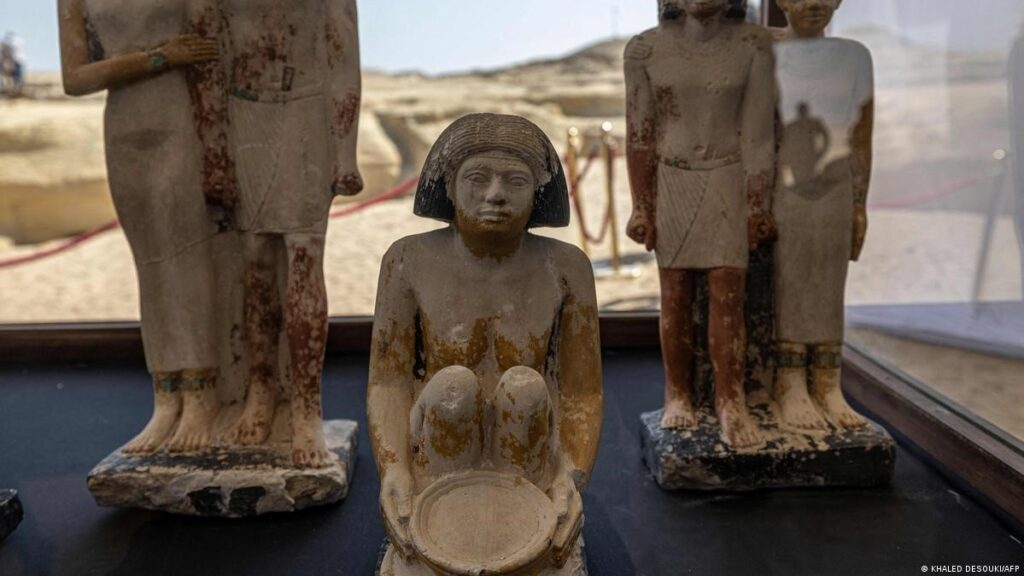Golden Mummy of Hekashepes Unveiled: 4,300-Year-Old Sarcophagus Discovered in Egypt’s Saqqara Necropolis

In the ancient necropolis of Saqqara, south of Cairo, Egyptian archaeologists have unearthed a spectacular discovery. Egypt’s former antiquities minister and archaeologist Zahi Hawass is leading a team of experts that has discovered a mummy wrapped in gold leaf that has been confined within a sarcophagus for 4,300 years. The mummy, which is considered to be that of a man by the name of Hekashepes, is among the oldest and most intact non-royal bodies ever discovered in Egypt.
At the burial site, where they also unearthed three other tombs, the researchers discovered the mummy down a 15-meter (50-foot) shaft. One of the tombs belonged to a priest, inspector, and overseer of nobles by the name of Khnumdjedef. Another tomb belonged to a guy named Meri, a top palace official with the authority to carry out exclusive religious rites due to his position as “secret keeper.” The third tomb, where a collection of what are supposed to be the largest statues ever uncovered in the area was also discovered, is where a judge and writer by the name of Fetek is said to have been buried.
Along with the mummies and the tombs, the crew also found a number of statues and pottery objects. Hawass claims that all of the finds were made between the 25th and 22nd centuries BC. Another archaeologist working on the site, Ali Abu Deshish, claimed that the discovery was significant since it established a connection between the monarchs and the local population.
Saqqara, a site that has been honoured as a UNESCO World Heritage Site, has been a functioning burial site for more than 3,000 years. More than a dozen pyramids, including the Step Pyramid, which is close to where the shaft containing the mummy was discovered, are found there. It is situated at what was the ancient Egyptian city of Memphis.
The announcement of the discovery of a full Roman residential city from the second and third centuries AD came a day after specialists in the southern Egyptian city of Luxor made it public. The city comprised residences, towers, and structures that historians have dubbed “metal workshops” that contained pots, tools, and Roman coinage.
In recent years, Egypt has made a number of significant archaeological discoveries as part of efforts to revitalise its tourism economy. The government anticipates 30 million visitors per year 2028 to the Grand Egyptian Museum, which is finally scheduled to open this year after several delays. However, some detractors claim that Egypt’s government prioritises media-grabbing discoveries over rigorous academic study in an effort to boost tourism.
